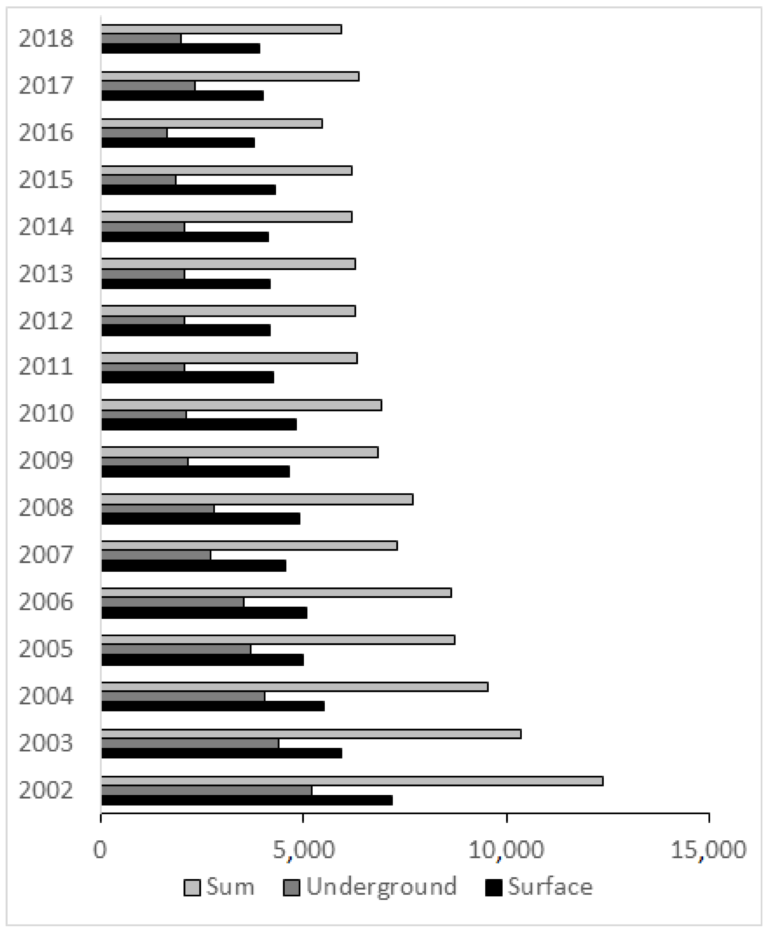Today, 1.2 billion people live in poverty. To lift them out of it, an average of about six tons of raw materials are needed per person and year—in particular minerals, fossil fuels, biomass and metal ores. This is the result of a study published in Environmental Science & Technology by researchers from the Chair of Sustainable Energy and Material Flow Management at the University of Freiburg.
For the first time, the scientists quantified the necessary material input of reducing global poverty and were able to show that the areas of nutrition and mobility have a particularly large impact on resource requirements. Dr. Johan Andrés Vélez-Henao, lead author of the study, comments, “The material requirement of six tons per year to afford a person a decent life is small when compared with the resource consumption in wealthy countries. In Germany, for example, it averages 72 and in the U.S. 85 tons per person per year. So a little redistribution could go a long way.”
Decent Living Standards: Minimum requirements of a life without poverty
In order to be able to calculate the resource requirements, the researchers first had to model the material prerequisites of a life without poverty. To do this, they used an expanded definition of the Decent Living Standards, which defines the minimum requirements for a life above the poverty line.
According to this definition, a person living just above the poverty line eats about 2,100 kcal per day; has a living space of 15 m² within a four-person household; has mobility of 8,000 km per year; and has access to education and health facilities as well as public services, such as sports halls or administrative buildings. In addition, each person has his or her own cell phone and shares a laptop and router with the other three household members.
Six tons per person per year
Based on these assumptions, the researchers calculated the amount of resources needed to maintain the minimum requirements for a life free of poverty. On average, this material footprint amounts to about six tons per person and year. By far the largest share is accounted for by food (about 38% or 2.3 tons per person per year) and mobility (26% or 1.6 tons per person per year). The researchers attribute the influence of nutrition to the large amount of biomass and fertilizers required for food production.
In contrast, housing, hygiene, education, communication, public services and clothing account for a much smaller share of the footprint. Breaking down the footprint of a poverty-free life by resource type, it is composed of 34% non-metallic minerals (such as sand, gravel, limestone and clay), 28% fossil fuels, 20% biomass (such as wood) and 18% metal ores.
Lifestyle significantly influences resource requirements
For their study, the researchers also evaluated more than 6,000 different scenarios of how different supply situations and lifestyles affect the raw material requirements of poverty reduction. They showed that the material footprint of the Decent Living Standards can be halved from six to three tons per year if a person lives in multi-family home built mostly of wood, eats a vegan diet and relies on potatoes as a staple food, reduces their private automobile use and walks short distances.
On the other hand, the footprint can more than double to as much as 14 tons per year if the person lives in a high-rise concrete building, subsists on a diet of meat and rice, and uses an electric car to get around.
Political implications
The study can also be used to draw political consequences for global poverty reduction and the fight against climate change and species extinction, notes Prof. Dr. Stefan Pauliuk, initiator and co-author of the study. “We urgently need to reduce our global consumption of raw materials because it is one of the main drivers of CO2 emissions and water scarcity as well as being responsible for around 90% of the world’s biodiversity loss. But our study shows that this need not be at the expense of the poor if we better distribute resources.”
However, concrete political targets for raw material consumption cannot be derived from the study, Pauliuk cautions. “For that, we need to better understand the regional characteristics of raw material use as well as the future recycling potentials of individual raw materials. But for the first time, our study gives a rough idea of the magnitude of resource demand and shows that poverty reduction and environmentally sound, sustainable resource management can go hand in hand.”
More information:
Johan Andrés Vélez-Henao et al, Material Requirements of Decent Living Standards, Environmental Science & Technology (2023). DOI: 10.1021/acs.est.3c03957
Provided by
University of Freiburg
Citation:
Raw material requirements for reducing global poverty calculated by weight for the first time (2023, September 27)



